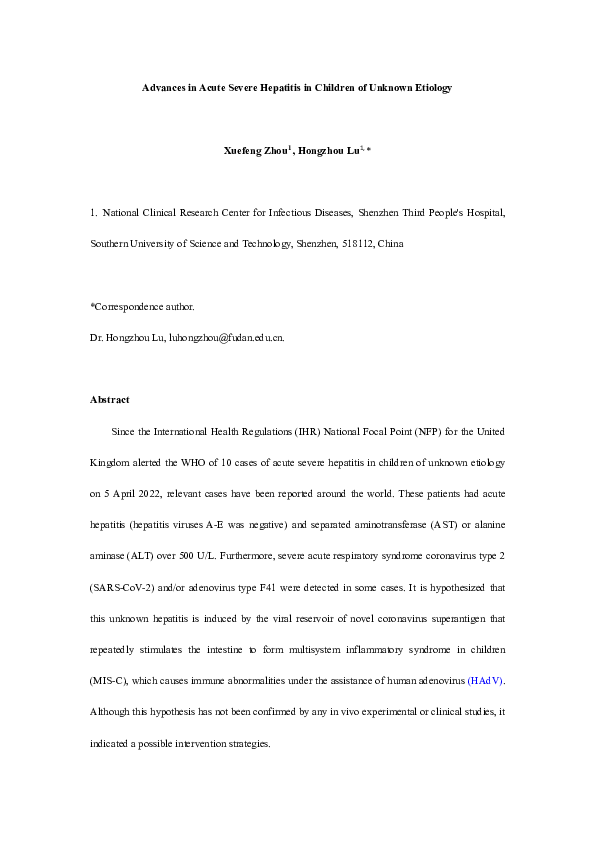Advances in Acute Severe Hepatitis in Children of Unknown Etiology
Preprint |
10.55415/deep-2022-0034.v1
This is not the most recent version. There is anewer
versionof this content available.
Abstract
Since the International Health Regulations (IHR) National Focal Point (NFP) for the United Kingdom alerted the WHO of 10 cases of acute severe hepatitis in children of unknown etiology on 5 April 2022, relevant cases have been reported around the world. These patients had acute hepatitis (hepatitis viruses A-E was negative) and separated aminotransferase (AST) or alanine aminase (ALT) over 500 U/L. Furthermore, severe acute respiratory syndrome coronavirus type 2 (SARS-CoV-2) and/or adenovirus type F41 were detected in some cases. It is hypothesized that this unknown hepatitis is induced by the viral reservoir of novel coronavirus superantigen that repeatedly stimulates the intestine to form multisystem inflammatory syndrome in children (MIS-C), which causes immune abnormalities under the assistance of human adenovirus (HAdV). Although this hypothesis has not been confirmed by any in vivo experimental or clinical studies, it indicated a possible intervention strategies.


